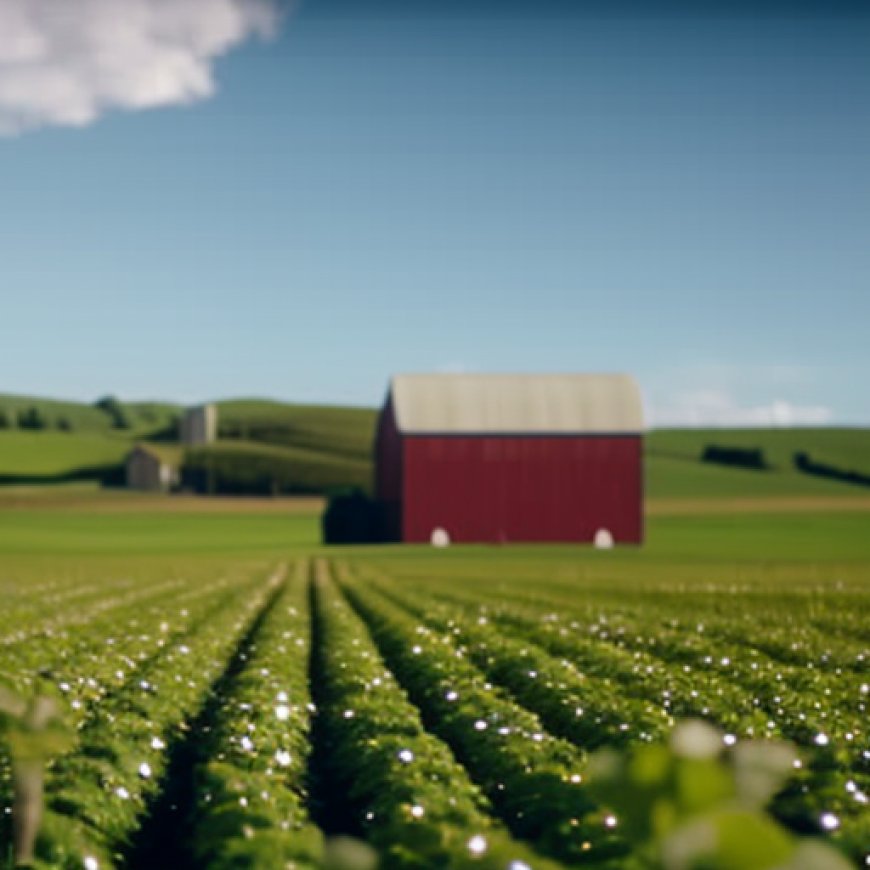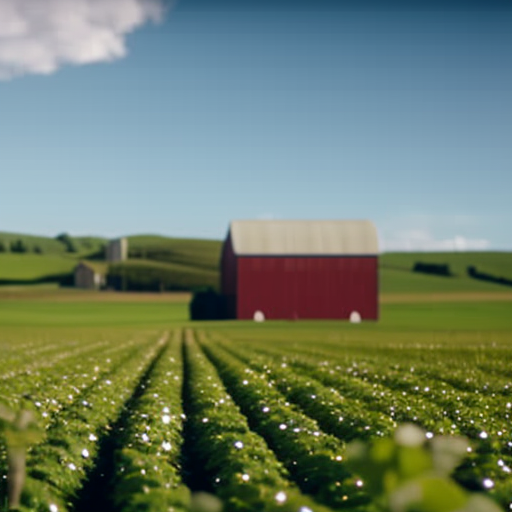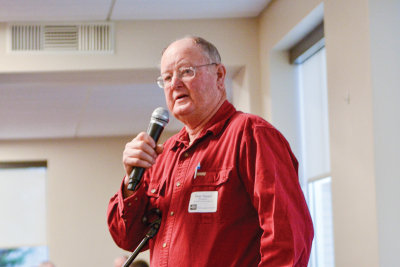Farm Bureau sounds the alarm on disappearing agricultural land
Farm Bureau sounds the alarm on disappearing agricultural land Smoky Mountain News


The Importance of Farmland Preservation in Haywood County

On April 1, the annual gathering at Lake Junaluska took on a somber tone as the issue of farmland preservation was discussed. Don Smart, president of the Haywood County Farm Bureau, highlighted the significant loss of farmland in the county over the past 40 years. With less than 50,000 acres remaining out of the original 80,000, the dwindling number of farms and farmers poses various challenges.
Agriculture is not only an employment issue but also an economic, food security, and national security issue. It is crucial to preserve farmland to maintain the county’s identity and support North Carolina’s largest industry. Nationally, agriculture provides jobs for over 22 million people, with just 1.9 million farmers.
The Impact of Farmland Loss
Haywood County is part of the larger picture of farmland loss in the United States. Out of the 850 million acres of farmland and woodlands in the country, 350 million are considered “prime.” Last year, North Carolina surpassed $100 billion in agricultural products, contributing at least $30 million to Haywood County’s economy.
Unfortunately, Haywood County has already lost 80% of its prime farmland. The remaining land consists of 10,000 acres of cropland, 20,000 acres of pastureland, and timberland. The challenge lies in managing and preventing wasteful development, unlike European countries that prioritize farmland preservation.
The Threat of Development
Ryan Manning, the farmland preservation program coordinator with the Haywood County Soil and Water Conservation District, explained that the rapid growth and development in North Carolina come at the expense of farmland. If current trends continue, Haywood County is projected to lose another 4,400 acres, amounting to 9% of the remaining farmland.
Kaleb Rathbone, assistant commissioner to N.C. Agriculture Commissioner Steve Troxler, emphasized that farmland preservation is a top priority for the state. A study by the American Farmland Trust revealed that North Carolina is the second most at-risk state for farmland loss by 2040. With a total farmland area of approximately 8.5 million acres, losing another 1.6 million acres would be devastating.
Preservation Efforts and Challenges
While there are conservation and easement programs in place, such as North Carolina’s 36,000-acre mark, more needs to be done. Easements alone cannot solve the problem. The state’s conservation program has seen a record number of applications, but the lack of funding poses a challenge. With around $20 million in the budget and applications costing approximately $60 million, there is a significant gap.
Improving profitability for farmers is also crucial for farmland preservation. The General Assembly has allocated $10 million for each of the next two years to attract agricultural manufacturing and processing facilities to the state. This funding aims to support farmers and capitalize on the state’s growth.
The Role of Education and Legislation
Preserving farmland goes beyond protecting the land itself; it also involves ensuring a future generation of farmers. Schools in the region offer farming coursework, but funding cuts threaten these programs. Sen. Kevin Corbin and Rep. Karl Gillespie, both from Macon County, understand the importance of farmland preservation. Rep. Gillespie helped write the NC Farmland and Military Protection Act, which aims to prevent foreign government acquisition of certain lands near military installations.
A Call for Preservation and Identity
As Haywood County undergoes economic diversification, it is crucial to maintain its agricultural roots. Kaleb Rathbone emphasized the need to preserve the county’s identity amidst rapid change. While growth is inevitable, efforts must be made to ensure that Haywood County does not lose its agricultural heritage in the process.
SDGs, Targets, and Indicators Analysis
1. Which SDGs are addressed or connected to the issues highlighted in the article?
- SDG 2: Zero Hunger
- SDG 8: Decent Work and Economic Growth
- SDG 11: Sustainable Cities and Communities
- SDG 12: Responsible Consumption and Production
- SDG 15: Life on Land
The article discusses the issues related to farmland loss, agriculture, and the impact on the economy, food security, and identity. These issues are connected to the SDGs mentioned above.
2. What specific targets under those SDGs can be identified based on the article’s content?
- SDG 2.4: By 2030, ensure sustainable food production systems and implement resilient agricultural practices that increase productivity and production.
- SDG 8.3: Promote development-oriented policies that support productive activities, decent job creation, entrepreneurship, creativity, and innovation.
- SDG 11.3: By 2030, enhance inclusive and sustainable urbanization and capacity for participatory, integrated, and sustainable human settlement planning and management in all countries.
- SDG 12.3: By 2030, halve per capita global food waste at the retail and consumer levels and reduce food losses along production and supply chains, including post-harvest losses.
- SDG 15.1: By 2020, ensure the conservation, restoration, and sustainable use of terrestrial and inland freshwater ecosystems and their services.
These targets are relevant to the issues discussed in the article, such as promoting sustainable agricultural practices, job creation, sustainable urbanization, reducing food waste, and conserving land and ecosystems.
3. Are there any indicators mentioned or implied in the article that can be used to measure progress towards the identified targets?
Yes, there are indicators mentioned or implied in the article that can be used to measure progress towards the identified targets. These include:
- Percentage of farmland lost over a specific period (indicator for SDG 2.4)
- Number of full- and part-time jobs related to agriculture (indicator for SDG 8.3)
- Percentage of prime farmland remaining (indicator for SDG 11.3)
- Amount of agricultural products and their economic impact (indicator for SDG 12.3)
- Number of acres preserved through conservation and easement programs (indicator for SDG 15.1)
These indicators can be used to track progress in achieving the targets mentioned above.
Table: SDGs, Targets, and Indicators
| SDGs | Targets | Indicators |
|---|---|---|
| SDG 2: Zero Hunger | 2.4: By 2030, ensure sustainable food production systems and implement resilient agricultural practices that increase productivity and production. | Percentage of farmland lost over a specific period |
| SDG 8: Decent Work and Economic Growth | 8.3: Promote development-oriented policies that support productive activities, decent job creation, entrepreneurship, creativity, and innovation. | Number of full- and part-time jobs related to agriculture |
| SDG 11: Sustainable Cities and Communities | 11.3: By 2030, enhance inclusive and sustainable urbanization and capacity for participatory, integrated, and sustainable human settlement planning and management in all countries. | Percentage of prime farmland remaining |
| SDG 12: Responsible Consumption and Production | 12.3: By 2030, halve per capita global food waste at the retail and consumer levels and reduce food losses along production and supply chains, including post-harvest losses. | Amount of agricultural products and their economic impact |
| SDG 15: Life on Land | 15.1: By 2020, ensure the conservation, restoration, and sustainable use of terrestrial and inland freshwater ecosystems and their services. | Number of acres preserved through conservation and easement programs |
Behold! This splendid article springs forth from the wellspring of knowledge, shaped by a wondrous proprietary AI technology that delved into a vast ocean of data, illuminating the path towards the Sustainable Development Goals. Remember that all rights are reserved by SDG Investors LLC, empowering us to champion progress together.
Source: smokymountainnews.com

Join us, as fellow seekers of change, on a transformative journey at https://sdgtalks.ai/welcome, where you can become a member and actively contribute to shaping a brighter future.







